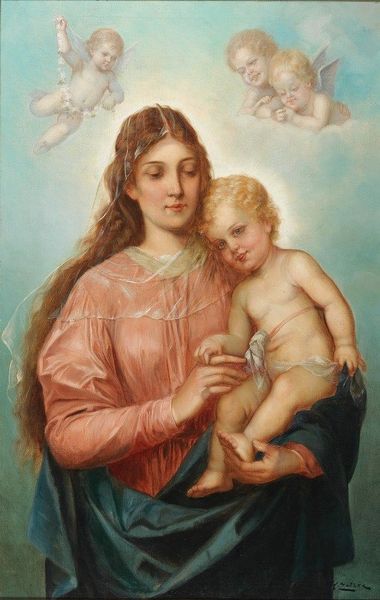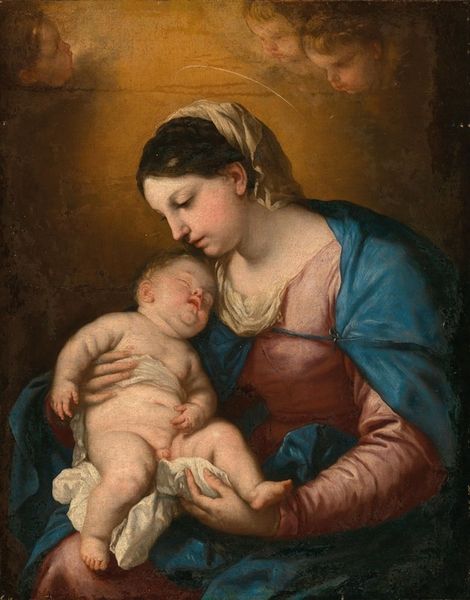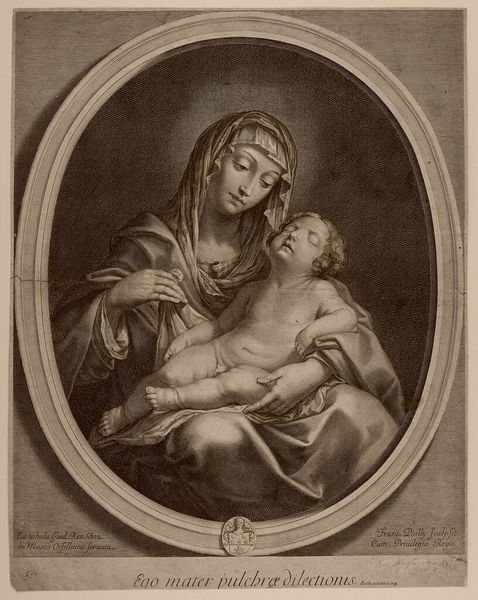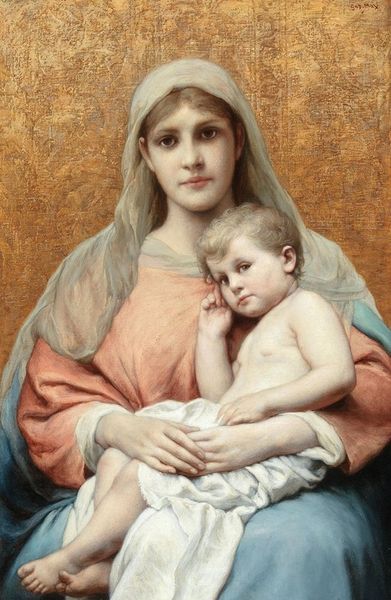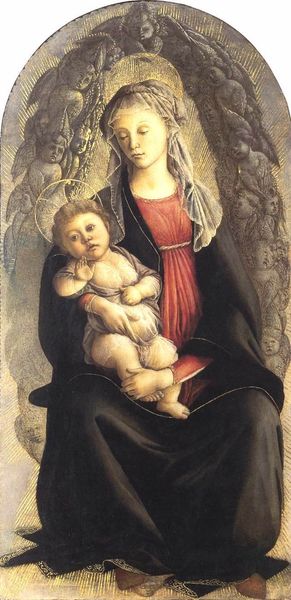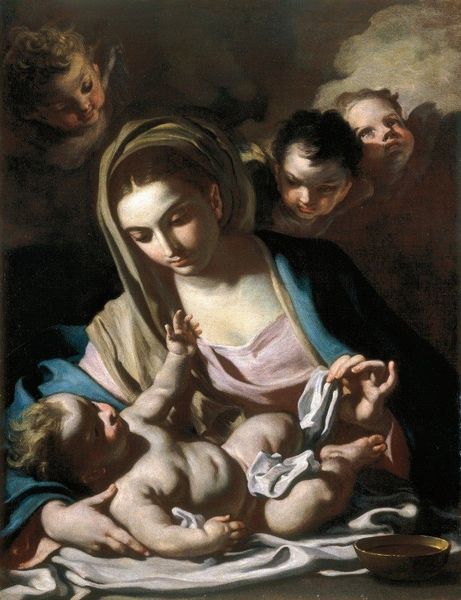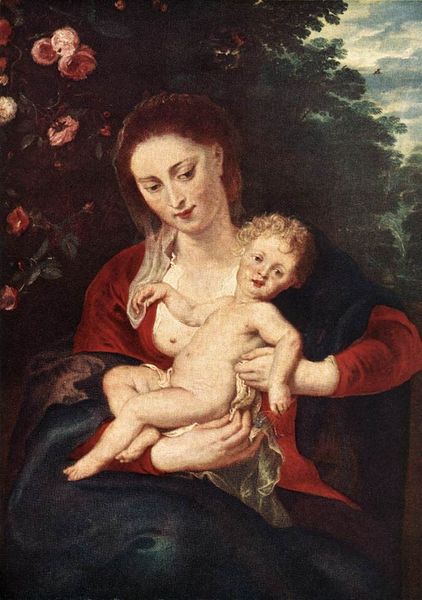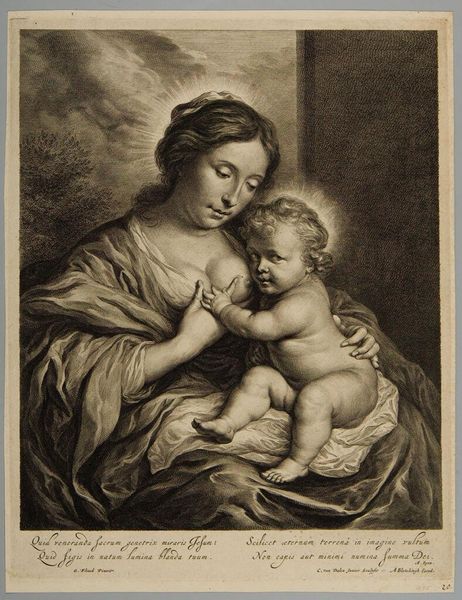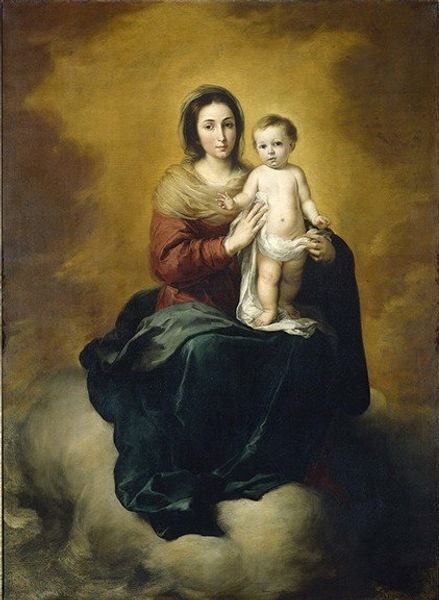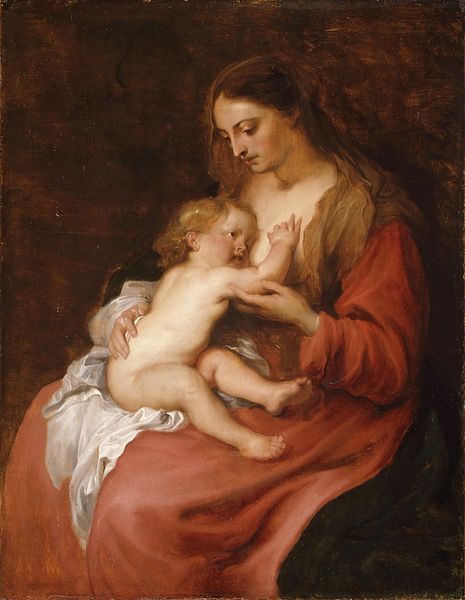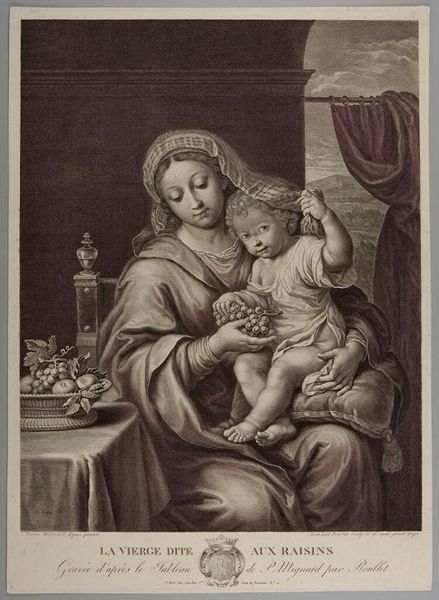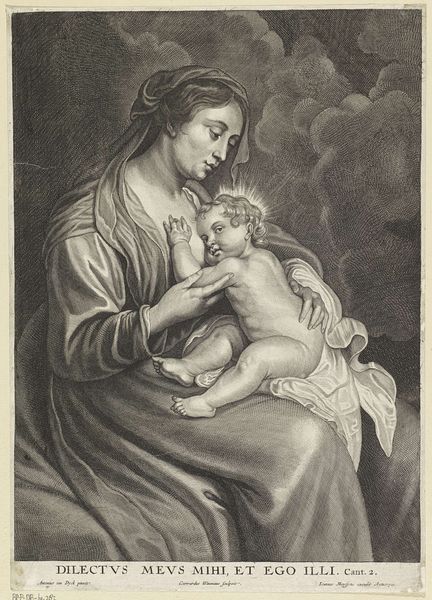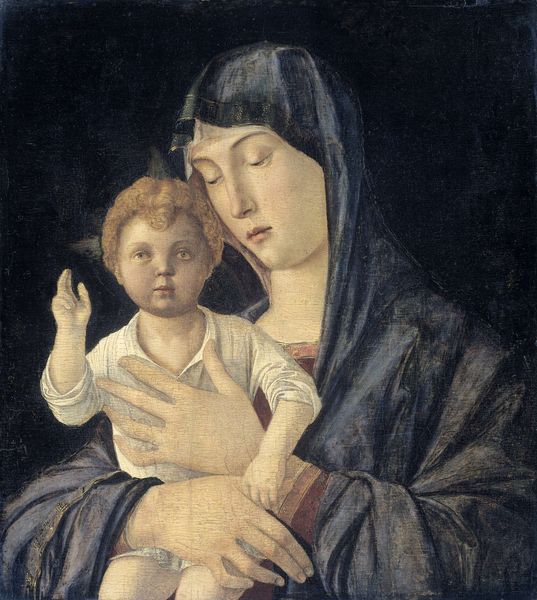
painting, oil-paint
#
portrait
#
high-renaissance
#
venetian-painting
#
painting
#
oil-paint
#
figuration
#
madonna
#
oil painting
Copyright: Public Domain: Artvee
Curator: It’s lovely. The intimacy of Mary gazing down at the infant Jesus, those chubby cheeks... there's a warmth that radiates despite the relatively muted palette. Editor: Let's dive into that palette. What social forces were at play in Venice during the late 16th century, influencing not just colour choice but also the representation of maternal figures like the Madonna? Consider Tintoretto's commission here in relation to Counter-Reformation ideals and expectations for female devotion and piety. Curator: Excellent point! This piece, "The Madonna of the Stars," painted by Jacopo Tintoretto around 1575-1585, exemplifies Venetian painting during the High Renaissance. You see this oil-on-canvas depicting Mary, surrounded by cherubic figures, presenting her child. Editor: The composition speaks volumes about the prevailing social norms. Note Mary's demure posture, hands clasped in prayer – she is presented as the epitome of virtuous womanhood, embodying the ideals of humility and submission promoted by the Church. It's all incredibly stage-managed. And while seemingly accessible, such art often reinforced patriarchal structures. Curator: True, though it could also be interpreted as representing strength, resilience, and perhaps a quiet subversion. Editor: Subversion how? Where do you see power dynamics challenged? Because it strikes me as perpetuating a rather restrictive ideology, regardless of artistic merit. Curator: Maybe “subversion” is too strong. But looking at those cherubs floating around her...the positioning makes her powerful! Like she's orchestrating their beauty and serenity. It evokes both her human love and divine status as Mother. Editor: A softer interpretation that brings in maternal and even intersectional theories regarding Tintoretto's use of light and darkness… We could view the painting as a symbol for nurturing and female spiritualism as an elevated position of motherly love. How would that reposition this image in art history for a contemporary feminist viewer? Curator: It reclaims it! We could interpret that the painting’s spiritual themes intersect beautifully, creating an evocative experience for women viewers to connect and reclaim some lost femininity through motherly acceptance of “The Madonna”. Editor: Indeed. This piece allows us to contemplate both its historical context and the modern day feminist perspective on these representations of women.
Comments
No comments
Be the first to comment and join the conversation on the ultimate creative platform.
